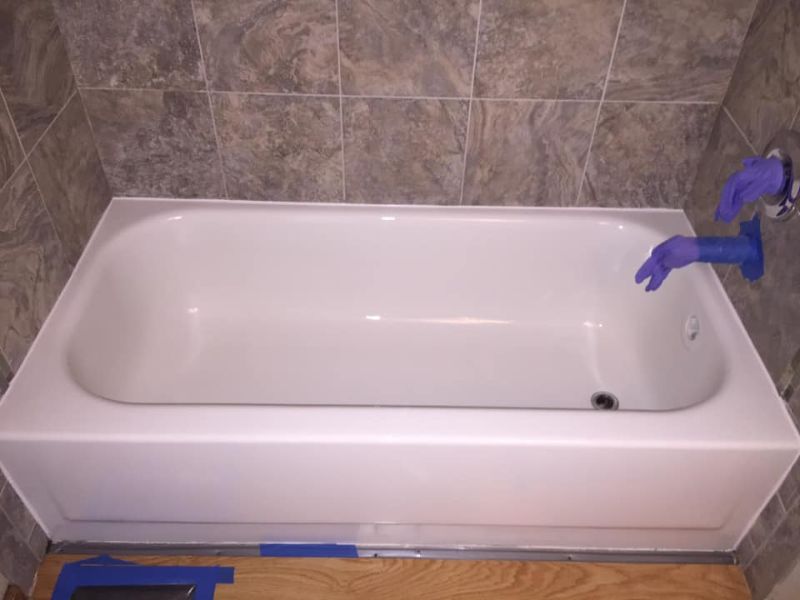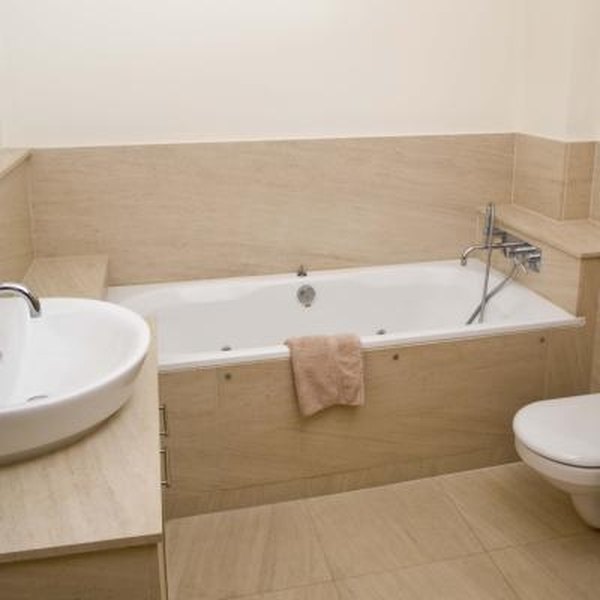How do you feel in regards to Tools You Need to Install a New Bathtub ?

Installing a bath tub isn't exactly brain surgery, however it does need solid plumbing, woodworking, and occasionally, tiling skills. Changing an old bathtub with a brand-new one is also a moderately hard project. If the old bathtub is readily easily accessible, the task can move easily; if you have to open up a wall surface to remove the old bathtub and place the new bathtub, the task is much harder. In either situation, the project is within a house handyman's abilities, although you will certainly need an assistant to move out the old tub and also set in the brand-new one. Ensure you have qualified yourself for the job as well as fit attempting it. As opposed to hiring a specialist to take over a halfway-completed task, it is far better to consider employing one before you start. Chances are you might require a professional plumber to make tube connections.
This post will certainly help you install a new bath tub in your bathroom if you have already gotten a brand-new tub as well as do not require to alter the setup of your previous supply of water pipes.
Your tools as well as product checklist need to comprise the following:
- New Tub
- Hammer
- Pipeline Wrenches
- Prybar
- Shatterproof glass
- Level
- Pliers
- Flexible Wrench
- Putty Knife
- Screwdriver
- Cold Chisel
- Tape Measure
- Pipeline Caps
Getting ready for the Installment
To start with, the supporting frame supplied with the bath must be fitted (if called for) according to the manufacturer's directions. Next off, fit the faucets or mixer to the bath tub. When suitable the tap block, it is essential to ensure that if the tap includes a plastic washer, it is fitted in between the bathroom and also the taps. On a plastic bath, it is likewise practical to fit a supporting plate under the taps device to stop strain on the bathtub.
Fit the flexible tap adapters to the bottom of both faucets making use of 2 nuts and also olives (occasionally supplied with the tub). Fit the plug-hole outlet by smearing mastic filler round the sink outlet opening, and then pass the outlet through the hole in the bathroom. Make use of the nut provided by the supplier to fit the plug-hole. Check out the plug-hole electrical outlet for an inlet on the side for the overflow pipeline.
Next off, fit completion of the versatile overflow pipe to the overflow outlet. After that, screw the pipe to the overflow face which ought to be fitted inside the bath. Make certain you utilize every one of the supplied washers.
Link the trap to the bottom of the waste outlet on the tub by winding the thread of the waste outlet with silicone mastic or PTFE tape, and screw on the trap to the electrical outlet. Link the bottom of the overflow tube in a similar manner.The bathroom must currently prepare to be fitted in its final position.
Removing Old Touches
If you need to replace old taps with new ones as a part of your setup, then the first thing you should do is disconnect the supply of water. After doing so, switch on the taps to drain any water continuing to be in the system. The procedure of getting rid of the existing faucets can be quite problematic because of the restricted access that is often the case.
Make use of a container wrench (crowsfoot spanner) or a faucet tool to undo the nut that links the supply pipes to the taps. Have a cloth all set for the continuing to be water that will come from the pipelines. When the supply pipelines have actually been eliminated, use the exact same device to loosen the nut that holds the faucets onto the bath/basin. You will certainly need to stop the solitary faucets from turning throughout this process. Once the taps have been eliminated, the holes in the bath/basin will certainly have to be cleansed of any type of old securing substance.
Before moving on to fit the brand-new taps, contrast the pipeline connections on the old faucets to the brand-new faucets. If the old faucets are longer than the new faucets, after that a shank adapter is required for the new taps to fit.
Mounting the Bath tub
Utilizing the two wooden boards under its feet, put the tub in the required setting. The wooden boards are practical in uniformly spreading the weight of the bathtub over the area of the boards rather than concentrating all the weight onto four small factors.
The following goal is to make certain that the bath tub is leveled all round. This can be accomplished by checking the spirit level and readjusting the feet on the tub up until the spirit level reviews level.
To mount taps, fit all-time low of the outermost adaptable tap connector to the ideal supply pipe by making a compression join; after that do the same for the various other tap.
Turn on the supply of water and also inspect all joints and also new pipework for leakages and also tighten them if essential. Load the tub as well as also examine the overflow outlet as well as the typical outlet for leakages.
Finally, deal with the bathroom paneling as explained in the maker's user's manual. Tiling and securing around the bathtub needs to wait till the tub has actually been utilized at the very least when as this will settle it into its last position.
Fitting New Touches
If the tails of the new taps are plastic, then you will need a plastic port to avoid damages to the string. One end of the adapter fits on the plastic tail of the faucet as well as the various other end offers a link to the current supply pipelines.
If you require to fit a monobloc, after that you will certainly call for reducing couplers, which links the 10mm pipe of the monobloc to the common 15mm supply pipe.
Next, place the tap in the placing hole in the bath/basin guaranteeing that the washing machines remain in location in between the faucet and the sink. Safeguard the tap in position with the manufacturer offered backnut. As soon as the tap is safely in position, the supply pipes can be attached to the tails of the taps. The faucets can either be attached by using corrugated copper piping or with normal faucet ports. The former type must be linked to the faucet finishes initially, tightening only by hand. The supply pipelines can later on be connected to the other end. Tighten both ends with a spanner after both ends have actually been linked.
Tiling Around the Bathtub
In the location where the bath meets the floor tile, it is needed to secure the accompanies a silicone rubber caulking. This is essential as the fitting can move enough to split a stiff seal, triggering the water to permeate the wall surface in between the bath as well as the tiling, causing complications with moisture as well as feasible leaks to the ceiling below.
You can choose from a variety of coloured sealers to assimilate your components as well as installations. They are marketed in tubes and also cartridges, and also are capable of sealing voids as much as a width of 3mm (1/8 inch). If you have a bigger gap to fill, you can load it with twists of drenched newspaper or soft rope. Bear in mind to constantly fill up the bathtub with water prior to sealing, to allow for the motion experienced when the tub is in usage. The sealant can fracture relatively early if you do not consider this movement prior to sealing.
Alternatively, ceramic coving or quadrant floor tiles can be utilized to edge the bathroom or shower tray. Plastic strips of coving, which are easy to use and also reduce to size, are also conveniently readily available on the market. It is recommended to fit the tiles making use of water-resistant or waterproof sticky and also grout.
Bathtub Installation
How Important Is A Bathtub To Your Home?
High-quality baths, showers, and other bathroom updates are necessary when considering a smart investment in your home. It’s a room that you go to every day and one that is constantly being used by guests.The bathroom is one of the top trafficked rooms in a home and also one of the most valuable in terms of home resale.
Install Piping Before Tub
You will be using your existing drain and waste vent system, but pipes required include the hot and cold water supply lines and a pipe leading to a shower head. A mixing valve and shower head are also needed. Air chambers may be required.
Position the Tub
Lower the tub into place so that the continuous flange fits against the wall studs and rests on 1’x4' or 2’x4' supports. Anchor the tub to the enclosure with nails or screws inserted through the flanges into the studs.
NOTE: Remember, bathtubs and shower stalls may require support framing. A bathtub filled with water is extremely heavy, so check building codes and framing support before installing the tub.
Assemble Drain Connections
Assemble the bathtub drain connections by connecting the tub overflow with the tub drain above the trap, not beyond it. The trap will have a compression fitting that screws over the arm of the overflow assembly.
Place a Pipe For the Shower Head
First, locate a brass female threaded winged fitting and attach it to a framing support via a screw or a nail. Then run a pipe up the wall for the shower head. Sweat or solder the other side of the brass fitting to the top of the pipe.
Attaching Hot and Cold Water Lines
Attach your water lines for both hot and cold by sweating these directly into the hot and cold ports of the mixing valve. The mixing valve will be how water enters the tub’s system, not by the pipes themselves.
Install the Spout
Extend a piece of 1/2 inch pipe, or whichever length is specified in the manufacturer’s instructions, for the tub spout. Sweat on a male threaded fitting at the end of the pipe or use a brass nipple of the proper length and a 1/2 inch cap.
NOTE: At this point you should have your rough-in plumbing work inspected before proceeding further.
Check For Leaks
Restore the water pressure and check the drain connection and the supply pipes for any sign of leaking.
estore the Bathroom Wall
Replace the wall with moisture-resistant drywall as a base for your wall covering. Seal the joints between the wall and your new tub with silicone caulk as protection against water seepage.
https://www.berkeys.com/2016/12/02/bathtub-installation-dallas/

Do you really like reading up on How to Install a Bathtub Yourself? Place a review directly below. We will be pleased to know your opinions about this review. We hope that you come back again later on. So long as you liked our post please be sure to pass it around. Thanks a lot for going through it.
Give Me A Quote!
Comments on “How to Install a Tub (Step By Step).”